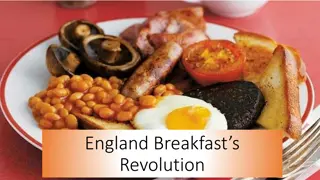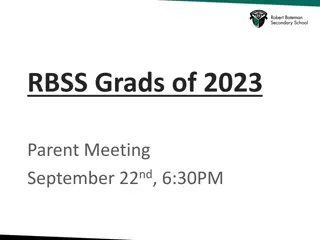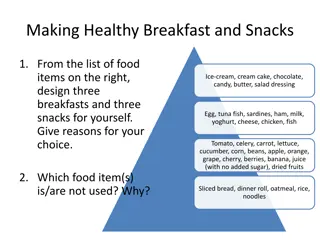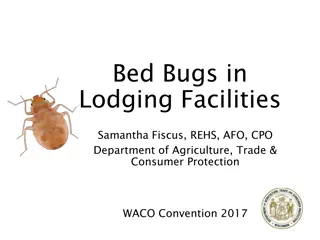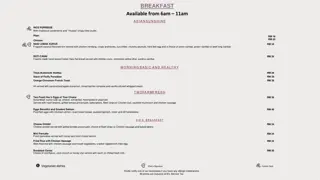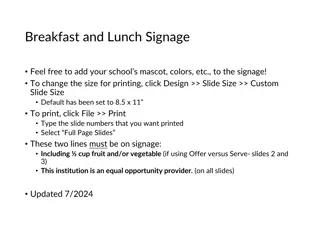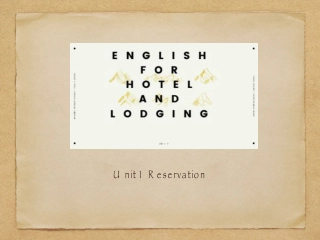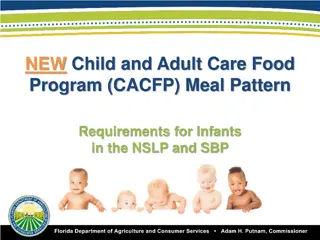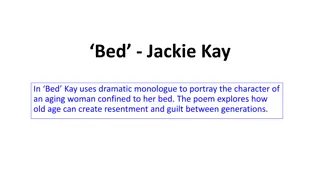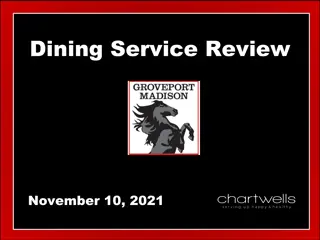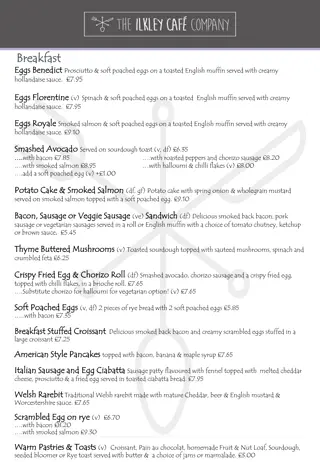Opportunities and Challenges in the Bed-and-Breakfast Industry
The bed-and-breakfast industry faces challenges from formal hotels and informal accommodation services like Airbnb. However, there are growth opportunities with specialized accommodations and catering to diverse demographics such as Groundlings, Millennials, and Baby Boomers. Competition from Airbnb is increasing, but bed-and-breakfasts offer unique experiences and a homey atmosphere. Understanding myths and realities about B&Bs is crucial, as they provide private bathrooms, high-speed internet, and appeal to a range of travelers.
Download Presentation

Please find below an Image/Link to download the presentation.
The content on the website is provided AS IS for your information and personal use only. It may not be sold, licensed, or shared on other websites without obtaining consent from the author. Download presentation by click this link. If you encounter any issues during the download, it is possible that the publisher has removed the file from their server.
E N D
Presentation Transcript
More Opportunities for Growth Based on the latest information, the bed-and-breakfast industry hasn t grown much during the past three years and will continue to face challenges from the dynamics of the formal (hotel) and the informal (Airbnb, etc.) hospitality sectors. With total travel expenditures in the US among US residents and international visitors to increase a minimum of 4.0% during the 2018 2020 period, there should also be many opportunities for bed-and- breakfast owners to offer specialized accommodations. The U.S. Travel Association s 6-month (November 2017 April 2018) Leading Travel Index (LTI) for international and domestic leisure travel were also trending positive.
Bed-and-Breakfasts Appeal to Many Demographics One of MMGY Global s micro-segments of travelers in its 2017 2018 Portrait of American Travelers Study is Groundlings, who are 34% of all travelers, use their personal automobiles on vacation and 66% of their vacations are repeat visits. Millennials are very active travelers and almost 20% are international travelers. Unique experiences are what Millennials seek most during their travels and bed-and-breakfast owners have an advantage with their local knowledge. Baby Boomers are a very important market for bed- and-breakfast owners and AARP s 2018 Travel Trends survey reported that 49% only traveled domestically during 2017. Plus, they were more likely to be luxury travelers, paying more for lavish features.
Making Accommodations for Airbnb Competition Airbnb and other accommodation-sharing services have become new competitors of bed-and-breakfasts, as AlphaWise/Morgan Stanley research found that leisure travelers using Airbnb increased from 12% during 2015 to an estimated 25% during 2017. Skift s 2017 US High-Income Traveler Survey revealed that the top reason travelers chose an Airbnb accommodation instead of a traditional hotel was it was in a better location, at 40%, with it was cheaper second at 30% and it was nicer, 24%. Another 2017 survey from Skift (US Experiential Travel Survey) found that 63% of respondents (who were classified as avid travelers) said they had never used Airbnb; however, 33% said they had at least once.
A Home Away from Home Two of the mistaken myths about bed-and-breakfasts are they do not have private bathrooms, but 94% do, and they aren t a good choice for business travelers, but 93% have high-speed Internet service and offer a homier atmosphere than hotels. Most bed-and-breakfast owners are couples, 72%, and another 18% are single women; 5%, single men; and 5%, non-couple partnerships. Although most bed-and-breakfasts are located in a village, 43%, and rural locations, 29%, almost one- quarter (23%) are located in urban settings, which is conducive to business travelers and those who want to be close to a city s culture and activities.
What Makes B&Bs Special The better bed-and-breakfasts distinguish themselves from hotels, motels and accommodation-sharing services by offering complementary transportation services, afternoon snacks, an entertainment library and beach supplies. Many successful bed-and-breakfasts are highlighting their pet-friendly policies, especially with the constant increase in the number of pets and people traveling with pets. These B&Bs feature potty areas and treats. Bed-and-breakfasts can be found in all 50 states and in some special places: Simsbury 1820 House, Simsbury, CT; Cedar Mountain Farm, Athol, ID; Boot Hill B&B, Dodge City, KS; Old Taos Guesthouse, Taos, NM; and Cliffside Inn, Newport, RI.
Advertising Strategies Although local bed-and-breakfasts may not have the budgets for regular TV advertising, highly recommend ads on your Website, especially during Q1 to plan for summer vacations. Help bed-and-breakfast owners to create special packages: Romantic getaway with flowers and dinner at a local, top-level restaurant; Arts Weekend with tickets to local cultural events; and outdoor adventures, partnering with local rafting livery, riding stables, etc. Recommend B&B operators market themselves to local businesses to provide accommodations for new executive hires during their first visit and as an executive retreat for small business meetings and special events.
New Media Strategies With experiences being so important to Millennial-age travelers, encourage and even incentivize such guests to share their unique experiences during their stay at your B&B with video posts to social media. Create and post a series of videos, presented by the host/hostess, showing the property, the common area, bedrooms, bathrooms, kitchen and other amenities that are likely to attract a broad range of guests. Update and add new videos regularly. If you are a pet-friendly B&B, ask your guests to record and post videos of their stay with their pets, what activities they did together and what special amenities you provided to make pets welcomed.







